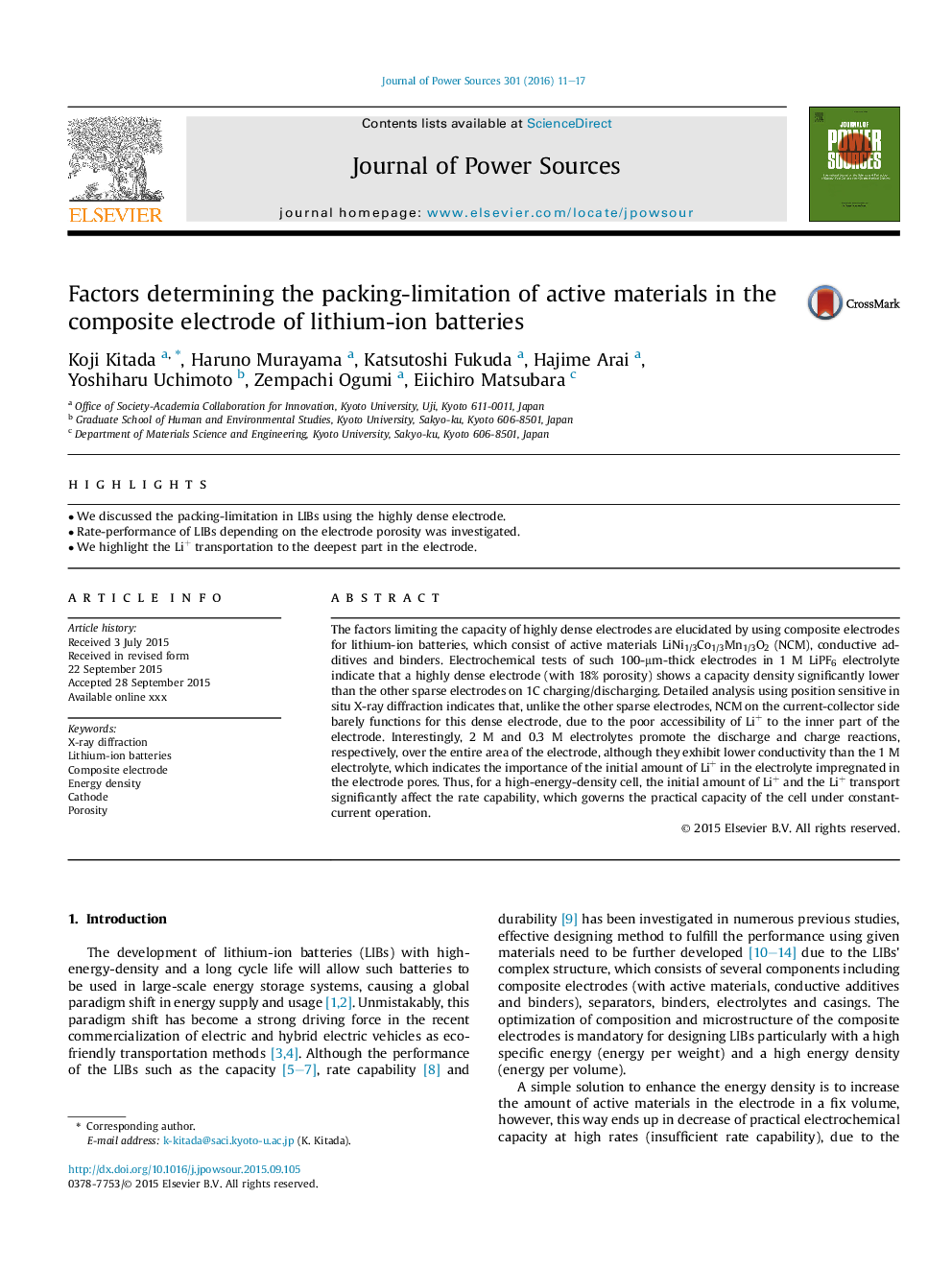| Article ID | Journal | Published Year | Pages | File Type |
|---|---|---|---|---|
| 7729940 | Journal of Power Sources | 2016 | 7 Pages |
Abstract
The factors limiting the capacity of highly dense electrodes are elucidated by using composite electrodes for lithium-ion batteries, which consist of active materials LiNi1/3Co1/3Mn1/3O2 (NCM), conductive additives and binders. Electrochemical tests of such 100-μm-thick electrodes in 1 M LiPF6 electrolyte indicate that a highly dense electrode (with 18% porosity) shows a capacity density significantly lower than the other sparse electrodes on 1C charging/discharging. Detailed analysis using position sensitive in situ X-ray diffraction indicates that, unlike the other sparse electrodes, NCM on the current-collector side barely functions for this dense electrode, due to the poor accessibility of Li+ to the inner part of the electrode. Interestingly, 2 M and 0.3 M electrolytes promote the discharge and charge reactions, respectively, over the entire area of the electrode, although they exhibit lower conductivity than the 1 M electrolyte, which indicates the importance of the initial amount of Li+ in the electrolyte impregnated in the electrode pores. Thus, for a high-energy-density cell, the initial amount of Li+ and the Li+ transport significantly affect the rate capability, which governs the practical capacity of the cell under constant-current operation.
Related Topics
Physical Sciences and Engineering
Chemistry
Electrochemistry
Authors
Koji Kitada, Haruno Murayama, Katsutoshi Fukuda, Hajime Arai, Yoshiharu Uchimoto, Zempachi Ogumi, Eiichiro Matsubara,
